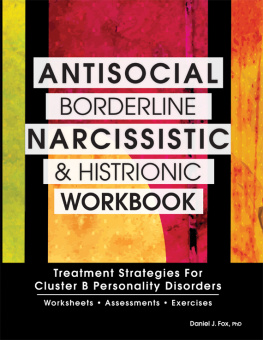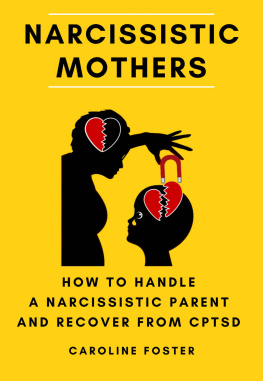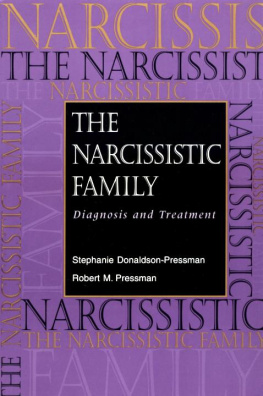
Preface
W HY ANOTHER book on psychotherapy? Our guiding objective has been to provide a useful, phenomenologically oriented training manual for practitioners in the field. There has been a void in the professional literature addressing ongoing training to improve what we refer to as listening to process. The implication is that it cannot be done without promoting rigidity and undermining the spontaneity of the practitioner. However, we believe that while it is not a substitute for supervision, instructive material can address the timing, the pace, and the integration of effective interventions in treatment. Our goal in this manual is to create a text about process that does not defeat process.
This is a text written with the practitioner, candidate, intern, resident, and graduate student in mind. It is dedicated to tracking the moment-to-moment nuances of patient and therapist exchanges, thereby highlighting experience-near intervention strategies for creating optimal opportunities for change. Theoretical contributions from various disciplines within the psychodynamic field are included throughout this text, beginning with Sandor Ferenczi and the strategically important work of Karen Horney and followed by recent advances from the interpersonal, intersubjective, and relational schools of psychotherapy.
The structure and organization of this book combine theory with application. Each chapter contains detailed case examples and verbatim exchanges between ourselves and our trainees. These questions and dialogues are meant to highlight typical questions that practitioners often have when faced with critical choice-points in treatment situations. We have included excerpts from these trainee sessions to illustrate how, as practitioners, we can become subjectively better attuned at sorting our way through the assumptions that inform our decision-making processes. The current therapeutic landscape offers multiple theoretical frameworks allowing practitioners more choices. Accordingly, a wide variety of treatment styles exist, often with no unifying principle to guide the treatment process. Our book, therefore, is an attempt to provide consistent touchstones anchoring clinical practice in a field rife with choice and inconsistencies.
What are the fundamental touchstones that ground solid clinical work? Can we come to agreement on what those elements might be? When we address the dynamics of character and history, therapists frequently feel stuck, especially with the sometimes difficult transferential dilemmas that occur during the course of treatment. We have found few available texts that ask critical questions to illustrate the multiple decision-points within any given therapeutic encounter. Noted theorists in the field often gear their writings to the audience of each other, rather than to the practitioner in the field, and much of what is written on a theoretical level is not translated into application in a way that improves proficiency. Moreover, in recent years graduate training programs have geared themselves toward the short-term, evidence-based therapies covered by insurance company benefits. These limitations place the beginning and even the seasoned therapist in an unenviable position when complicated clients present with issues that require a more comprehensive understanding of the complexity of the human psyche.
How are we to fill this gap, both theoretically and practically? Our questions around these issues surfaced most clearly within our supervisory experience. We witnessed a wide discrepancy between levels of technical competence in licensed practitioners. In our experience, training programs across the country did not seem to be producing a uniform level of competence in training professionals. What constitutes adequate training? With the gap between theoretical understanding and practical application widening, many practitioners have unfortunately adopted the position that they dont need to concern themselves with theoretical research, saying, I dont want to get involved in metapsychology. I just want to get down to the business of doing psychotherapy. At the same time, many practitioners feel that the work of doing psychotherapy feels solitary, lonely, often frustrating, overwhelming, and even shaming. The consequences of leaving this much of a gap between theory and practice can be dire. Recent grievous evidence of how inadequate training/supervision, and the blatant objectification of clients, can lead to malignant and destructive outcomes is chilling (Dimen, 2003, 2011; Starr and Aron, 2011). These clinical attitudes need to be considered or we run the risk of breeding therapeutic pessimism, compassion fatigue, and burn-out.
Ours is a profession with a long learning curve, one that is often misunderstood and undervalued. Yet we glimpse an exciting evolution on the horizon. Many advanced practitioners have been engaged in online dialogues addressing practitioners questions about ongoing training and education. Out of these dialogues emerges a paradigm shift in psychotherapy, new attitudes regarding how we can make practice more deeply engaging. The most fruitful questions seem to be: How do we experience our clients? and How do we experience ourselves in the treatment process? These questions, consistently posed side by side, demand a new way of thinking about psychotherapymore experience-near and more intersubjective in their metatheoretical approach.
We have drawn on experience-near theorists in this text because they have come closest to bridging the gap between theory and practice. When we use the phrase experience-near, we are describing a process-orientation that requires close listening to each patients subjective narrative as it unfolds in the present. Our subsequent theoretical constructs flow out of these empathic, introspective, and subjective attunements and processes. This text therefore originates from our desire to capture in words a methodology that clinicians can use to track the unfolding process of psychotherapy in an experience-near manner. Accordingly, we both operationalized and systematized key components of the listening process to provide the therapist with improved tools to engage with the patient in the immediate moment.
Ours is an innovative model that creates a dynamic picture of the psyche, addressing the intrapsychic, interpersonal/relational and systemic aspects of the self in a theoretically integrated whole. We tested the versatility of our model by getting experiential feedback from a wide variety of practitioners, and this proved to be invaluable.
We have presented the material in a way that can be of value to both beginning and experienced therapists. To guide us in this, we asked of our group of colleagues and supervisees several very specific questions regarding the model:
- How understandable and useful is the model in terms of practical application?
- How does it expand your powers of listening and observation?
- How did this book change the nature of how you practice?
- In what ways have you improved your effectiveness as a practitioner?
The feedback on the model was clearly positive in all these areas. The strategic use of self from a subjective/interactive viewpoint allowed trainees to stay in an experience-near position and thereby gain more confidence in the therapeutic process itself. They were able to hold the complexity of the material more tightly as it unfolded in the moment, differentiate more clearly between the therapeutic alliance and transference dynamics, and better connect various parts into a unified whole.
We should state that as we supervised our group of trainees through the development of this model, we found that we were also supervised by them. Our lively exchange of ideas and their questions around unclear material helped us to further anchor our experience-near model into the day-to-day, and sometimes moment-to-moment, practical application of case material. Through the question-and-answer sessions captured at the end of each chapter, we hope that you will witness the unfolding learning process that these trainees experienced and be able to apply your own questions and case material to the frameworks and concepts presented in this text.
Next page











